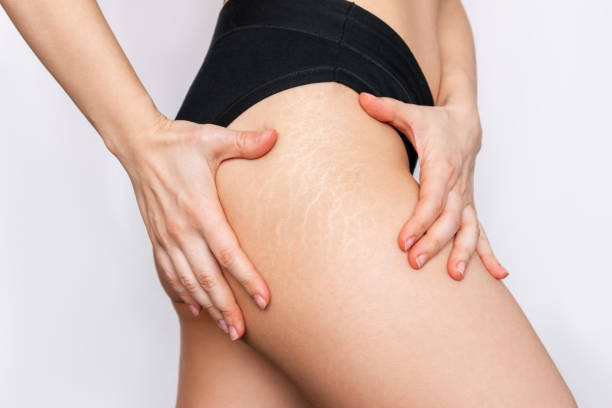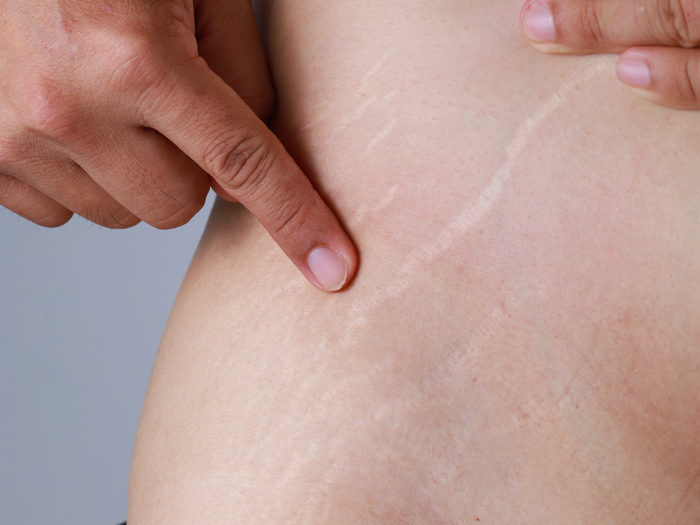Stretch marks are a common skin concern that affects millions of people worldwide. Whether caused by pregnancy, rapid weight changes, or growth spurts, these marks can impact one’s confidence and self-esteem. Among various solutions available, Laser Stretch Marks Treatment has gained significant attention for its promise to reduce the appearance of Stretch Marks Treatment In Dubai effectively. But does it really help? Let’s dive deep into how this treatment works and what you can realistically expect.
Understanding Stretch Marks: What Are They?
Before exploring the effectiveness of laser treatment, it’s essential to understand what stretch marks are. Stretch marks, medically known as striae, occur when the skin is stretched beyond its limits, causing the collagen and elastin fibers to tear. This tearing results in visible streaks on the skin that can range from red or purple when fresh to white or silver as they mature.
Stretch marks commonly appear on the abdomen, thighs, hips, breasts, and arms. While they are not harmful, their cosmetic appearance often motivates individuals to seek treatments to diminish their visibility.
How Does Laser Stretch Marks Treatment Work?
The science behind Laser Stretch Marks Treatment revolves around stimulating the skin’s natural healing process. Laser devices emit concentrated light beams that penetrate the skin layers. This controlled injury encourages collagen and elastin production, essential proteins that help maintain skin elasticity and firmness.
Different types of lasers target various depths of the skin. Some focus on the outer layers to improve texture and pigmentation, while others penetrate deeper to rebuild collagen structures. Over multiple sessions, the skin gradually repairs itself, resulting in a reduction of stretch marks’ visibility.
Types of Laser Treatments for Stretch Marks
There are several laser techniques used to tackle stretch marks, each with unique features:
- Fractional Laser Therapy: This method treats microscopic sections of the skin, leaving surrounding areas untouched to promote faster healing. It improves skin texture and color.
- Pulsed Dye Laser (PDL): Ideal for newer, red or purple stretch marks, PDL targets blood vessels to reduce redness and inflammation.
- Excimer Laser: Often used to restore skin pigmentation, particularly for older white stretch marks.
Knowing the differences can help set expectations about the results and treatment course.
Benefits of Laser Stretch Marks Treatment
Many people turn to laser therapy because of its proven benefits, such as:
- Non-invasive procedure: Laser treatments do not require surgical incisions, reducing recovery time.
- Stimulates natural skin repair: By boosting collagen and elastin, the skin regains its elasticity gradually.
- Improves skin texture and tone: Laser therapy can smooth out raised or uneven stretch marks and enhance overall skin appearance.
- Minimal downtime: Most individuals can resume daily activities shortly after treatment.
These advantages contribute to the popularity of laser treatments as a preferred option for stretch mark reduction.

What Results Can You Expect?
It’s important to have realistic expectations when considering Laser Stretch Marks Treatment. While lasers can significantly improve the appearance of stretch marks, complete removal is rare. Results vary depending on factors like:
- Age and severity of the stretch marks
- Skin type and color
- Number of treatment sessions
- Body area treated
Newer stretch marks tend to respond better than older ones because they are still in the active phase of skin damage. Multiple sessions spaced weeks apart are usually necessary to see noticeable improvement. Patience and commitment to the treatment plan are key to achieving the best outcomes.
Possible Side Effects and Precautions
Though generally safe, laser treatments can have some side effects. Common temporary effects include redness, swelling, and mild discomfort immediately after the procedure. These symptoms typically subside within a few days.
It is crucial to follow recommended precautions such as avoiding direct sun exposure before and after treatment to minimize risks of pigmentation changes or skin irritation.
Always discuss your skin type and medical history before undergoing laser therapy to ensure suitability and safety.
Who Is a Good Candidate for Laser Stretch Marks Treatment?
Laser treatment is suitable for most healthy individuals looking to improve stretch marks. However, people with very dark skin tones may need special laser types or settings to reduce the risk of pigmentation changes.
If your stretch marks are relatively new and red or purple in color, laser therapy might offer more dramatic results. For older white stretch marks, the improvement may be subtler but still worthwhile.
Ultimately, assessing your skin condition and goals will help determine if laser treatment is the right choice.
Alternatives to Laser Stretch Marks Treatment
While laser therapy is effective, other options exist for stretch mark management, including:
- Microneedling: Stimulates collagen production using fine needles.
- Chemical peels: Removes outer skin layers to promote regeneration.
- Topical treatments: Creams and oils may help prevent or slightly reduce stretch marks.
These alternatives vary in effectiveness and suitability based on individual needs.
Final Thoughts: Does Laser Stretch Marks Treatment Really Help?
In conclusion Stretch Marks Treatment Dubai offers a scientifically supported method to improve the appearance of stretch marks by encouraging natural skin repair and regeneration. It is among the most effective non-invasive treatments available today for stretch marks, especially when started early.
While it does not guarantee complete removal, many individuals experience noticeable improvements in skin texture, tone, and overall confidence. Understanding the treatment process, setting realistic expectations, and committing to the recommended sessions can maximize benefits.
If stretch marks are affecting your confidence, laser treatment might be the solution you have been looking for to regain smoother, healthier-looking skin.





Comments